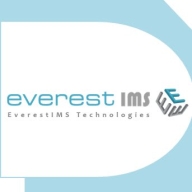

Infraon IMS and Sumo Logic Observability compete in IT management and monitoring. Sumo Logic Observability appears to have an edge with its advanced features, albeit at a higher cost, while Infraon IMS is preferred for pricing and customer support.
Features:Infraon IMS provides robust network management, automation capabilities, and powerful analytics. Sumo Logic Observability offers real-time monitoring, extensive third-party integrations, and advanced data analytics, enhancing data visibility and insights.
Room for Improvement:Infraon IMS could enhance its initial learning curve, expand integration options, and improve dashboard customization. Sumo Logic Observability may refine its ease of use, provide more straightforward query instructions, and broaden its deployment support to streamline adaptation.
Ease of Deployment and Customer Service:Infraon IMS is straightforward to install with responsive customer service that promotes quicker adoption. Sumo Logic Observability, though complex due to its advanced feature set, provides thorough documentation for guidance, requiring more technical depth for deployment.
Pricing and ROI:Infraon IMS offers competitive setup costs, facilitating a faster return on investment with its cost-effective pricing. Sumo Logic Observability, despite a potential higher initial expense, yields solid ROI via enhanced data insights and long-term benefits for organizations seeking advanced functionality.


Infraon IMS is used for monitoring network status, managing critical IT infrastructure, and ensuring connectivity. It helps organizations automate processes, gain network insights, and manage firewalls in private and cloud environments.
Infraon IMS is designed to assist in monitoring leased lines, switches, data center services, and devices across different environments. It provides alerts, manages assets, supports ITSM rules, and handles ticketing and incident management. With its comprehensive reporting on uptime, downtime, and memory utilization, Infraon IMS delivers detailed insights facilitating efficient infrastructure management. The platform integrates seamlessly with various systems and simplifies operations through real-time network monitoring, customizable reports, and a role-based access control system.
What are Infraon IMS's key features?Infraon IMS is implemented across diverse industries to manage and monitor IT infrastructures, from small to large-scale environments. It is especially beneficial in sectors needing reliable connectivity and efficient incident management, such as telecommunications, finance, and cloud service providers. The platform aids these industries in maintaining operational continuity and optimizing resource allocation.
Sumo Logic Observability is widely used for log aggregation, analysis, and SIEM capabilities. It assists in monitoring data, creating dashboards, and managing log storage.
Sumo Logic Observability helps teams with logging in production, debugging with trace IDs, and performing queries across large datasets. Developers leverage centralized logs for error detection and tracking metrics like successful transactions and data volume. Security teams integrate it with SOAR systems for automation and enhanced security investigations.
What are the key features?Industries like finance, healthcare, and technology implement Sumo Logic Observability to monitor sensitive data, manage high transaction volumes, and ensure compliance with regulatory standards. Security and development teams benefit from its robust capabilities, enabling effective collaboration and streamlined operations.
We monitor all Cloud Monitoring Software reviews to prevent fraudulent reviews and keep review quality high. We do not post reviews by company employees or direct competitors. We validate each review for authenticity via cross-reference with LinkedIn, and personal follow-up with the reviewer when necessary.